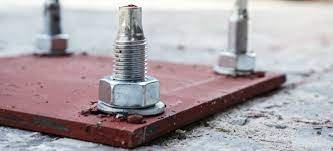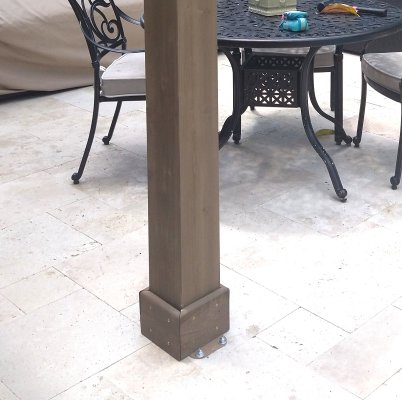- Joined
- Nov 17, 2015
- Messages
- 13,986
So....
Let's say something was bolted into place in concrete and now needs to be moved. And let's say it was bolted in with the type of anchor that expands below the surface and only goes in, not out. 1/2", 4" anchors, heavy duty, pic below
But the unit that's anchored needs to be moved, and the anchor needs to disappear, below the surface...which is nice tile, on top of the concrete, that you'd really rather not destroy in the process. And even if you do, the bolt has to get super flush with the underlying concrete so you can replace the tile paver.
What is the best way to proceed?
Ultimately, I'd like to remove the unit, knock the anchors into the concrete below the surface of the tile, flush or below with the concrete, and then replace the tiles. But I realize that might require very specific expertise/tools.
So as a second option if I can safely drive the anchor in to be just-below-flush with the tile without busting the tile, I can Traverfill the surface and be ok with that (outdoors).
Here's the kind of bolt:

As a visual, current situation is not unlike this, but instead of that red tile thing think a much nicer paver:
Let's say something was bolted into place in concrete and now needs to be moved. And let's say it was bolted in with the type of anchor that expands below the surface and only goes in, not out. 1/2", 4" anchors, heavy duty, pic below
But the unit that's anchored needs to be moved, and the anchor needs to disappear, below the surface...which is nice tile, on top of the concrete, that you'd really rather not destroy in the process. And even if you do, the bolt has to get super flush with the underlying concrete so you can replace the tile paver.
What is the best way to proceed?
Ultimately, I'd like to remove the unit, knock the anchors into the concrete below the surface of the tile, flush or below with the concrete, and then replace the tiles. But I realize that might require very specific expertise/tools.
So as a second option if I can safely drive the anchor in to be just-below-flush with the tile without busting the tile, I can Traverfill the surface and be ok with that (outdoors).
Here's the kind of bolt:

As a visual, current situation is not unlike this, but instead of that red tile thing think a much nicer paver:


